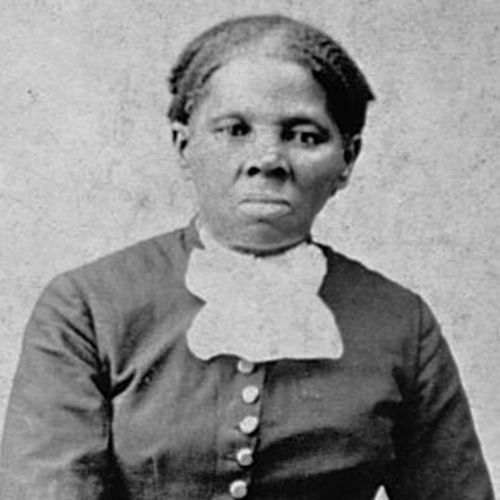Harriet Tubman: Guiding Light of Freedom and Union Spy During the Civil War
In the annals of American history, the name Harriet Tubman shines as a beacon of courage, resilience, and unwavering commitment to justice. Born into slavery, Tubman not only liberated herself but became a pivotal figure in the Underground Railroad, guiding countless enslaved individuals to freedom. Yet, her contributions extend beyond this remarkable feat; during the Civil War, Tubman became a Union spy, cementing her legacy as an indomitable force in the fight against slavery and injustice. In this exploration, we delve into the extraordinary life of Harriet Tubman, tracing her journey from bondage to liberation and examining her role as a conductor on the Underground Railroad and a Union spy during the Civil War.
Early Life: From Slavery to Freedom
Harriet Tubman was born around 1822 on a plantation in Dorchester County, Maryland. Born into slavery as Araminta "Minty" Ross, she endured the harsh conditions of bondage from an early age. Tubman's early years were marked by physical abuse and deprivation, and she experienced the brutal separation of families—a common tragedy in the institution of slavery.
In 1849, driven by an intense desire for freedom and a determination to escape the shackles of slavery, Tubman embarked on a perilous journey. Fearful of being sold further south, she undertook the treacherous escape route known as the Underground Railroad—a clandestine network of safe houses and secret routes that facilitated the escape of enslaved individuals to the free states and Canada.
Conductor on the Underground Railroad
Harriet Tubman's escape marked the beginning of her role as a conductor on the Underground Railroad. The Underground Railroad was not an actual railroad but a network of sympathetic individuals, both Black and white, who provided safe haven, guidance, and support to those seeking freedom. Tubman, with her intimate knowledge of the South and her indomitable spirit, became one of the Underground Railroad's most revered and effective conductors.
Over the course of nearly a decade, Tubman made approximately 13 missions to the South, guiding an estimated 70 enslaved individuals, including family members and friends, to freedom. Her courage and resourcefulness earned her the nickname "Moses" among those she led to liberty, drawing a parallel between her actions and the biblical figure who led the Israelites to freedom.
Tubman's journeys were fraught with danger, as she navigated through hostile territory, braved the perils of capture, and endured the constant threat of re-enslavement. Her ability to evade capture earned her a reputation as a masterful strategist, and her commitment to the cause of freedom made her a legendary figure in the fight against slavery.
The Fugitive Slave Act and Canada
The passage of the Fugitive Slave Act in 1850 intensified the risks faced by those seeking freedom. The law allowed for the capture and return of escaped slaves, even in free states, and imposed severe penalties on those who assisted them. Faced with the increased dangers, Tubman altered her routes, guiding freedom seekers further north and ultimately to Canada, where the Fugitive Slave Act held no jurisdiction.
Tubman's determination to ensure the safety and freedom of those she guided remained unwavering. Despite the risks and challenges posed by the law, she continued her work on the Underground Railroad, becoming a symbol of resistance against the oppressive institution of slavery.
John Brown and the Raid on Harpers Ferry
Tubman's involvement in the fight against slavery extended beyond her work on the Underground Railroad. In 1858, she became acquainted with the abolitionist John Brown, who admired Tubman's dedication to the cause of freedom. Brown envisioned a grand plan to spark a widespread slave rebellion, and he sought Tubman's support.
While Tubman did not directly participate in Brown's ill-fated raid on Harpers Ferry in 1859, she played a vital role in recruiting supporters and providing intelligence. Brown's raid aimed to seize the federal arsenal at Harpers Ferry, Virginia, and incite enslaved individuals to join the revolt. The raid, however, was thwarted, and Brown was captured and later executed.
The Civil War and Harriet Tubman's Union Spy Work
When the Civil War erupted in 1861, Tubman saw an opportunity to contribute to the cause of freedom on a grander scale. As the conflict unfolded, she offered her services to the Union Army, leveraging her knowledge of the South and her experiences on the Underground Railroad.
Tubman's work as a Union spy began in 1862 when she joined a group of scouts operating in Confederate territory along the South Carolina coast. Her primary role involved gathering intelligence, providing crucial information about Confederate positions, supply routes, and troop movements.
The Combahee River Raid
One of Tubman's most significant contributions as a Union spy occurred during the Combahee River Raid in June 1863. Tubman accompanied Colonel James Montgomery and his troops on a daring mission to liberate enslaved individuals from plantations along the Combahee River in South Carolina.Ali zafar
Guided by Tubman's intimate knowledge of the region, the Union forces successfully navigated through Confederate defenses. As they reached the plantations, Tubman's presence became a source of inspiration for the enslaved individuals, many of whom chose to escape to freedom.
The Combahee River Raid stands as a testament to Tubman's strategic acumen and her dedication to the emancipation of enslaved individuals. The mission not only......

No comments